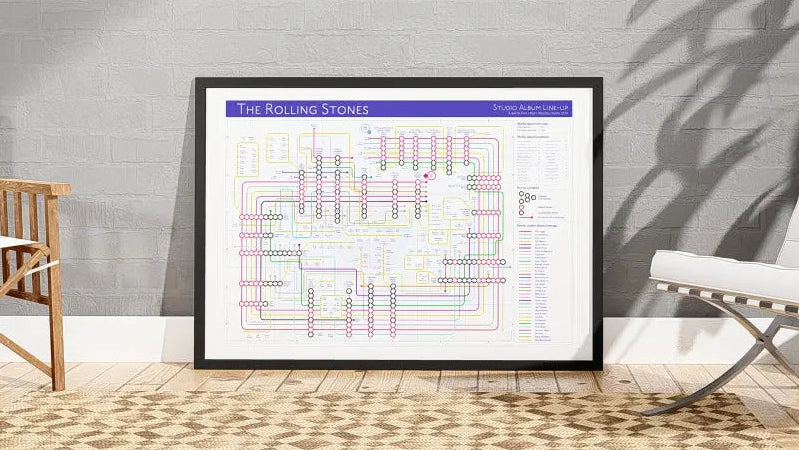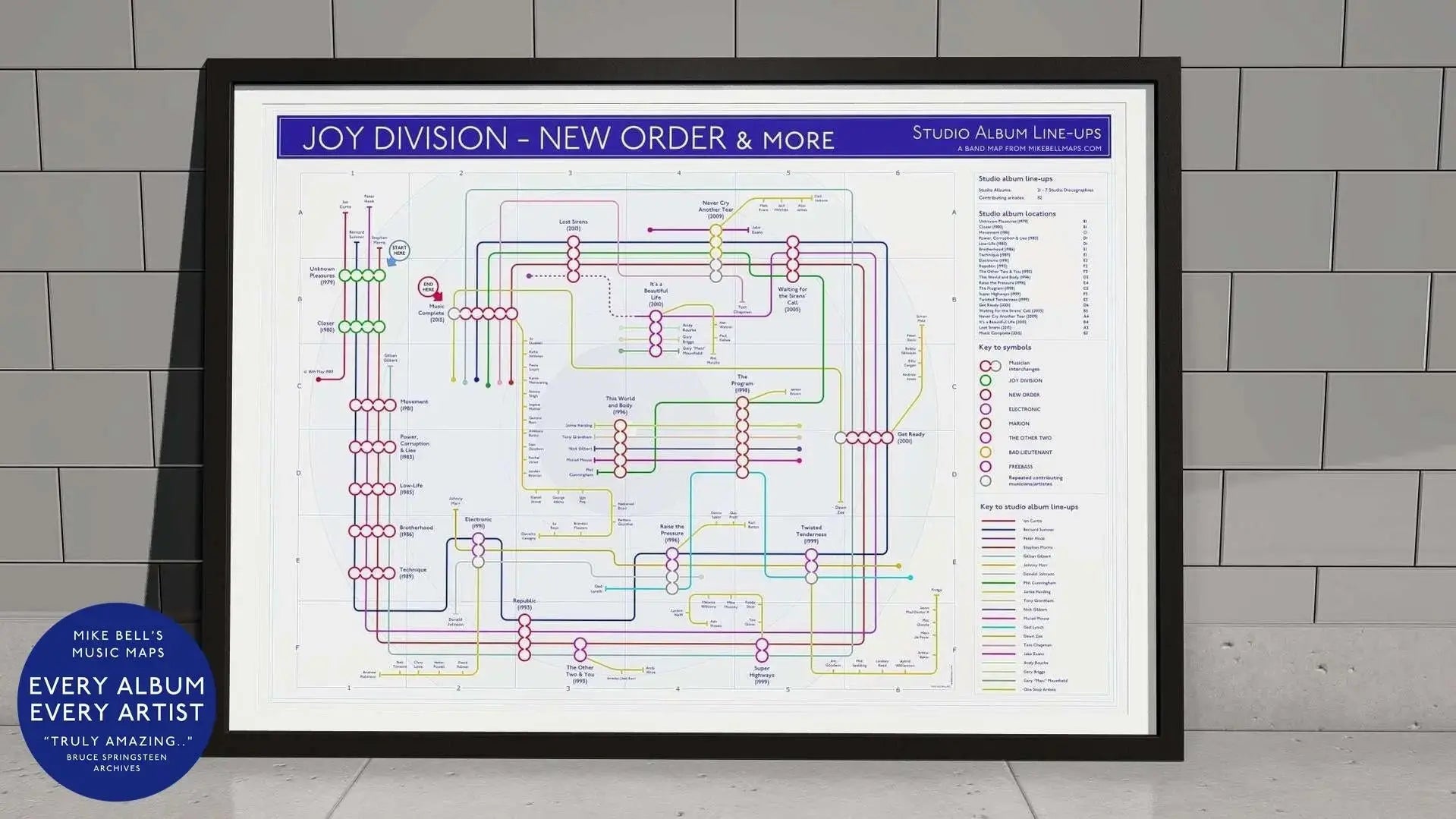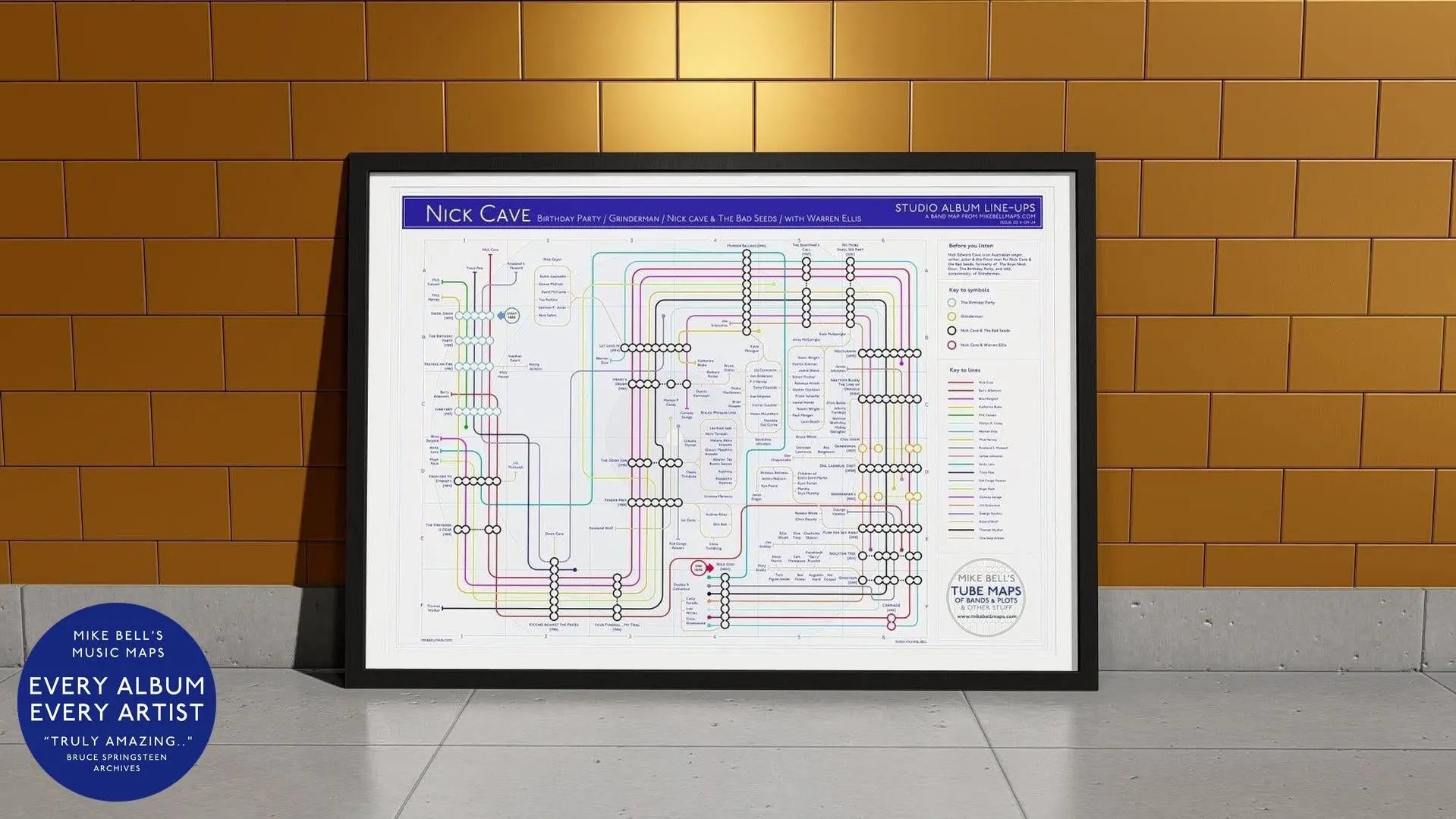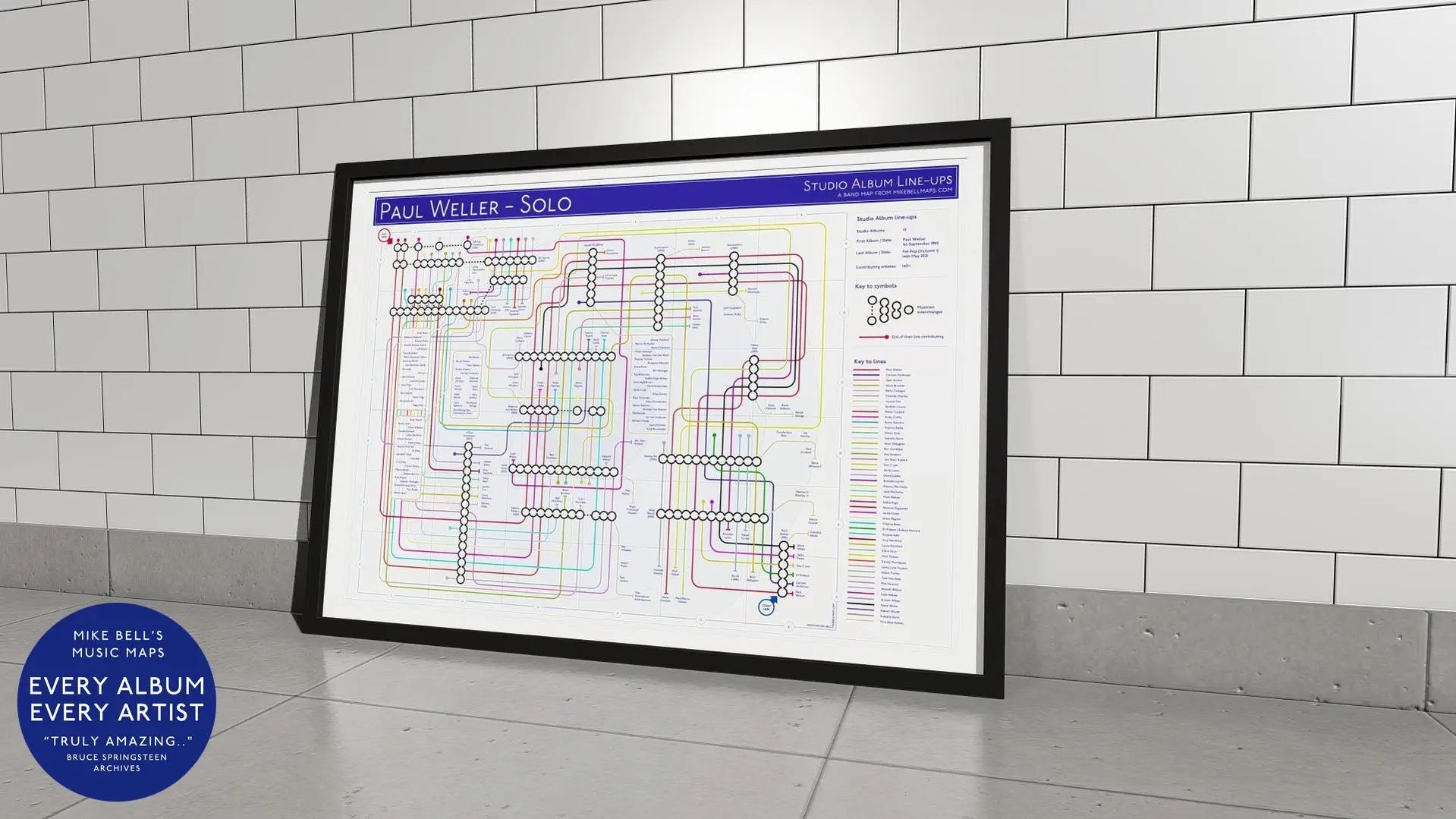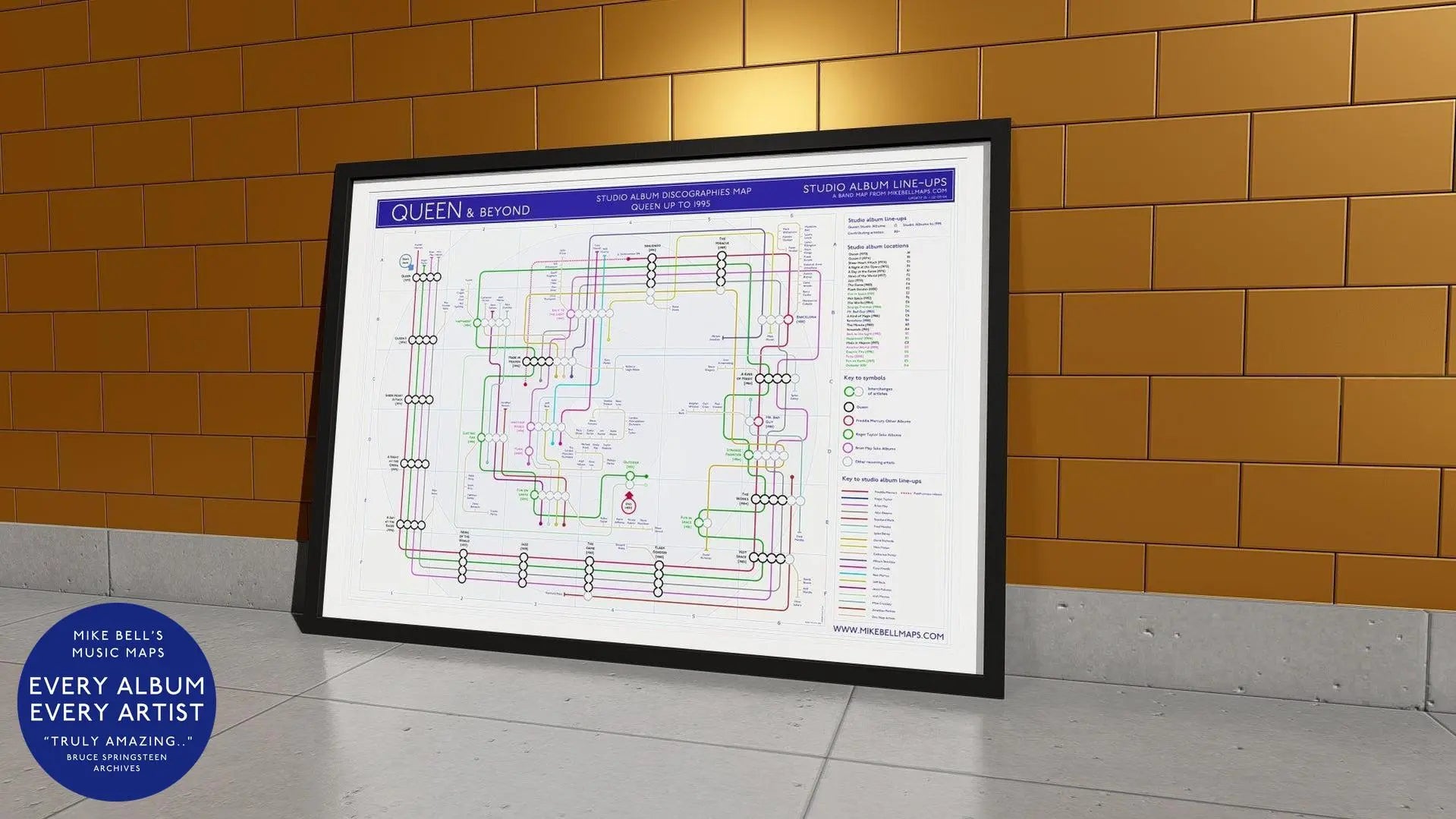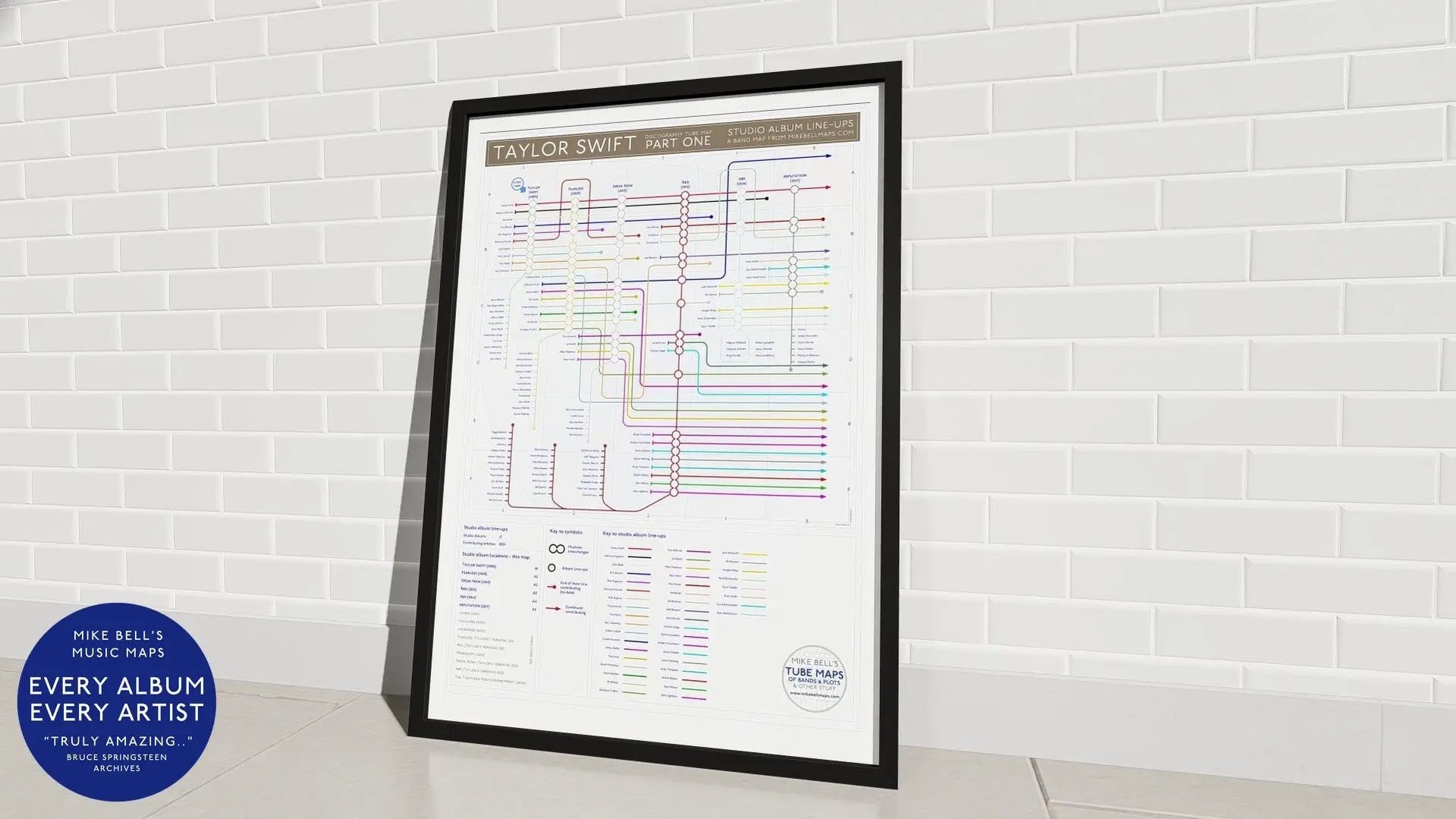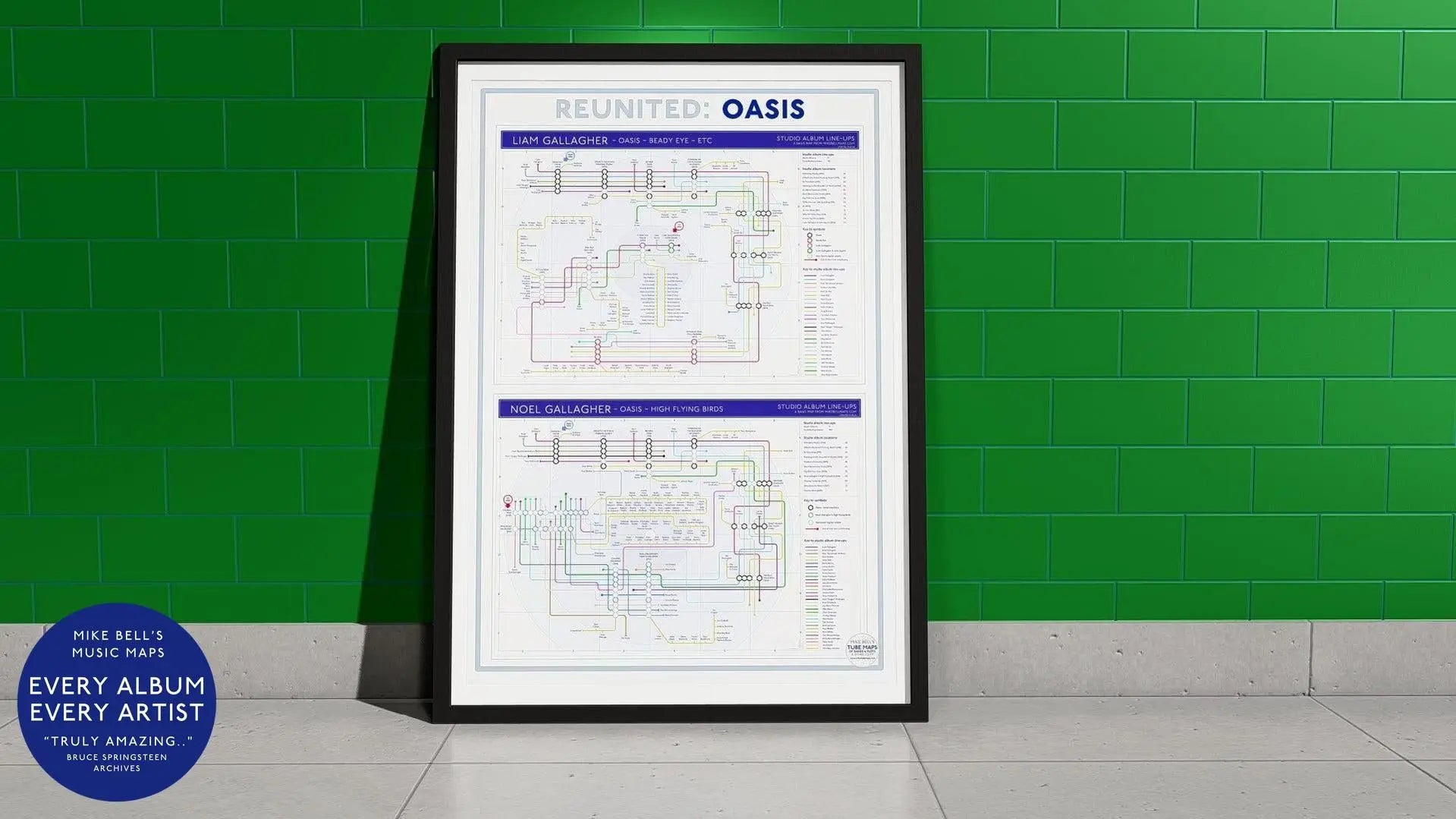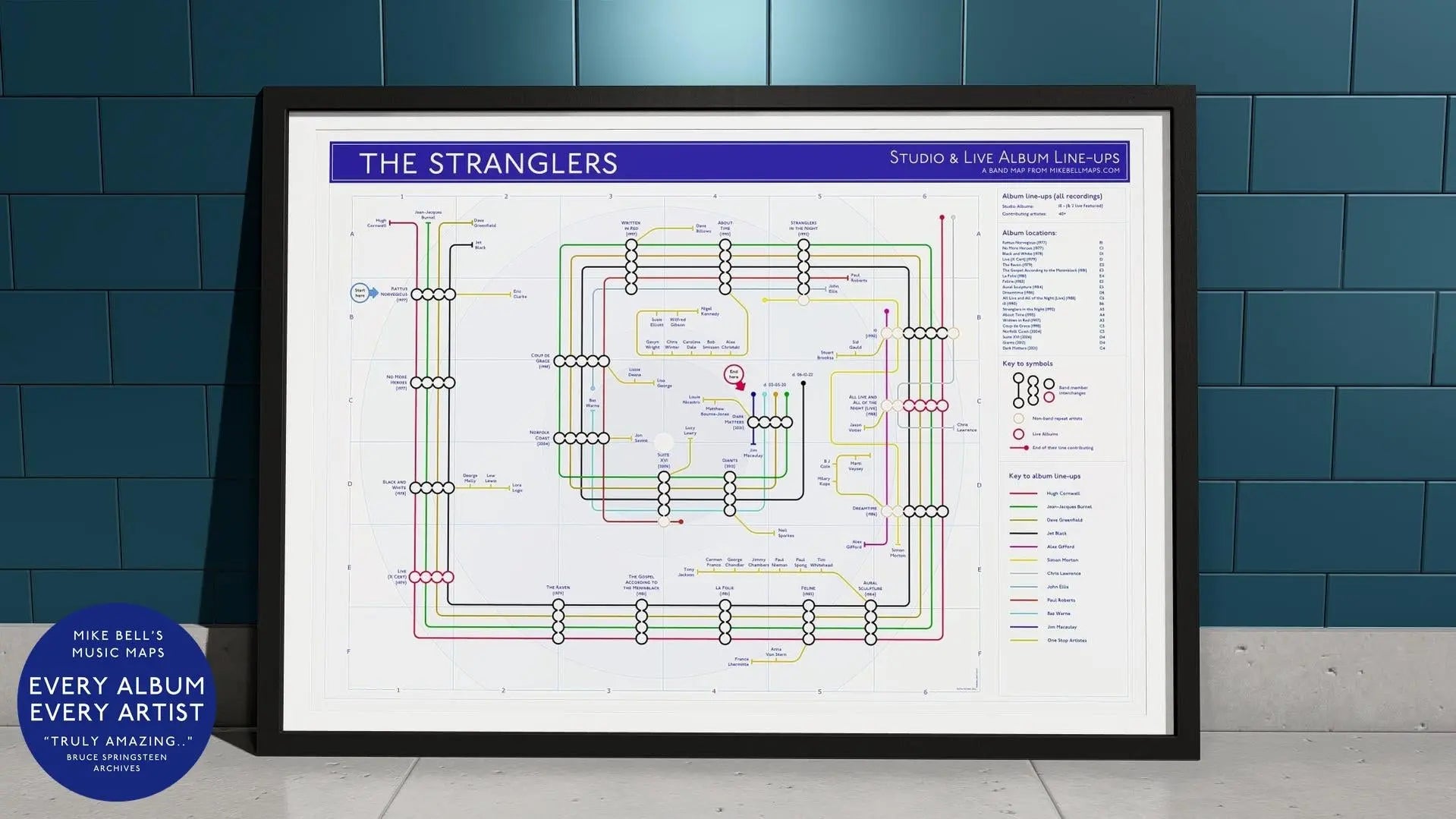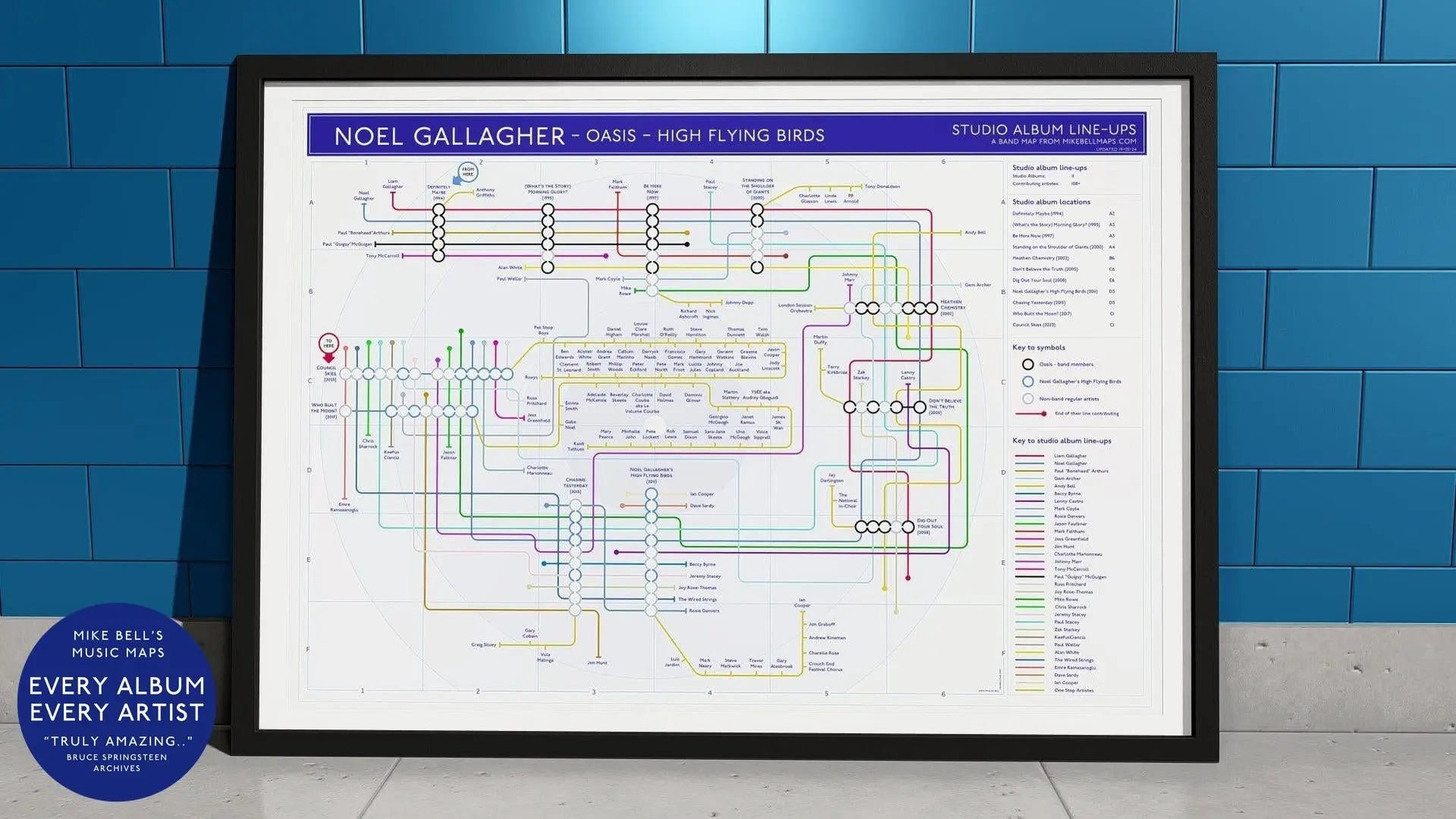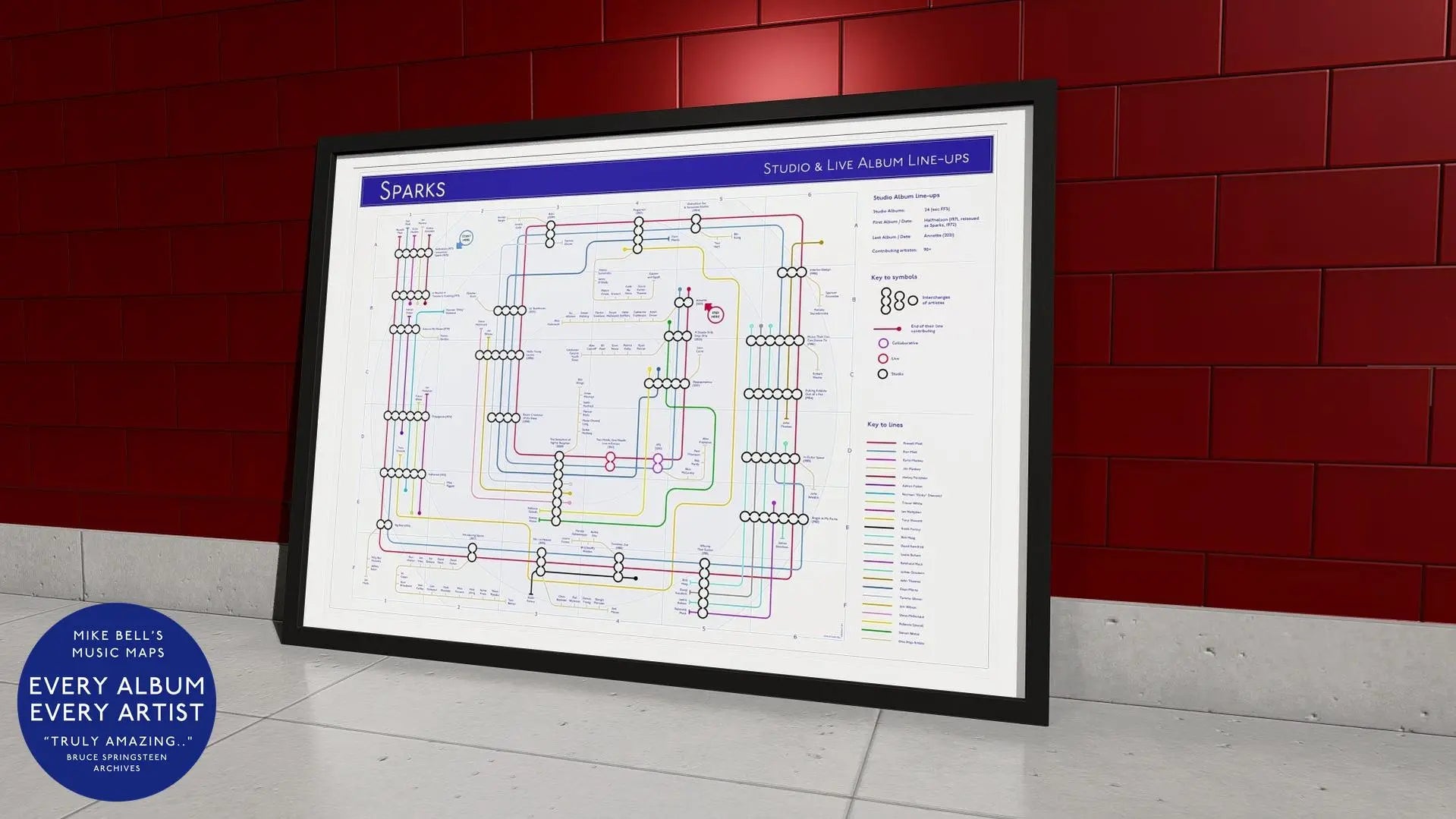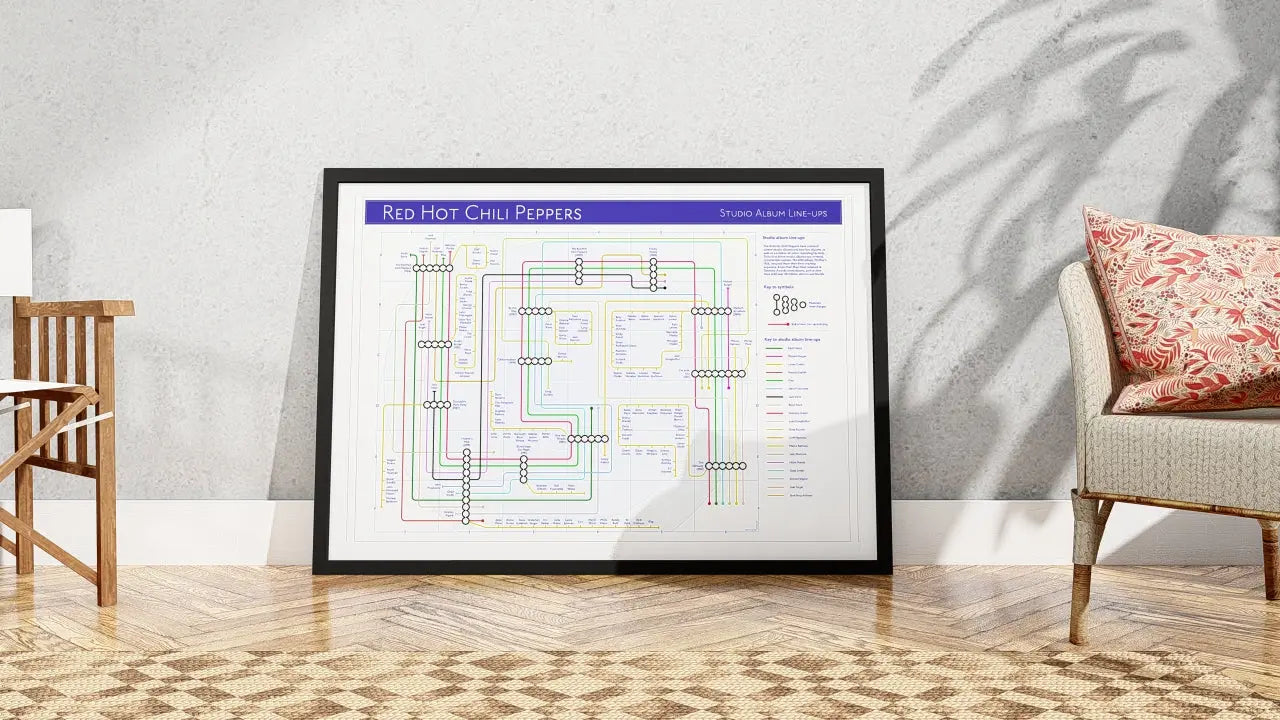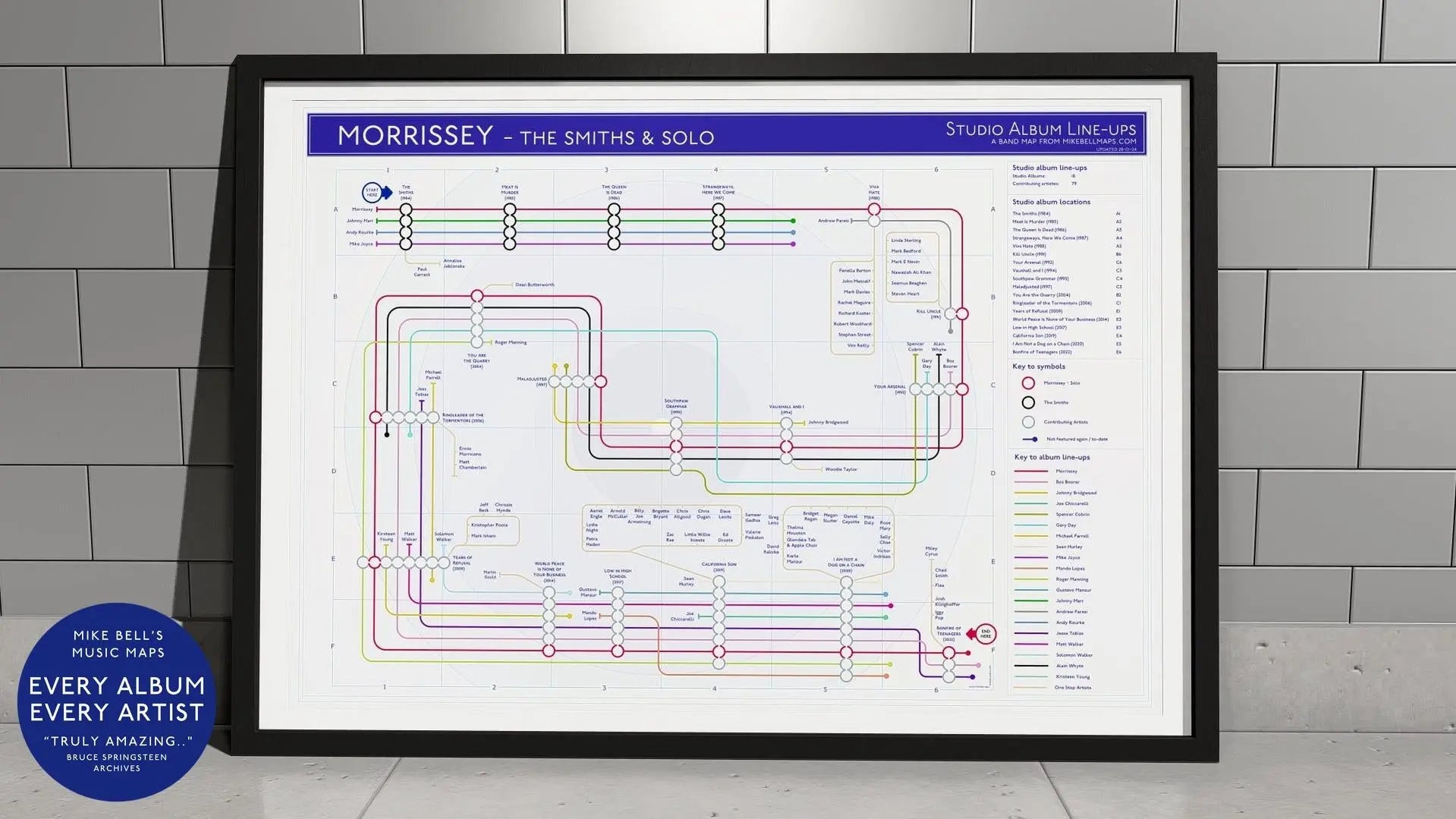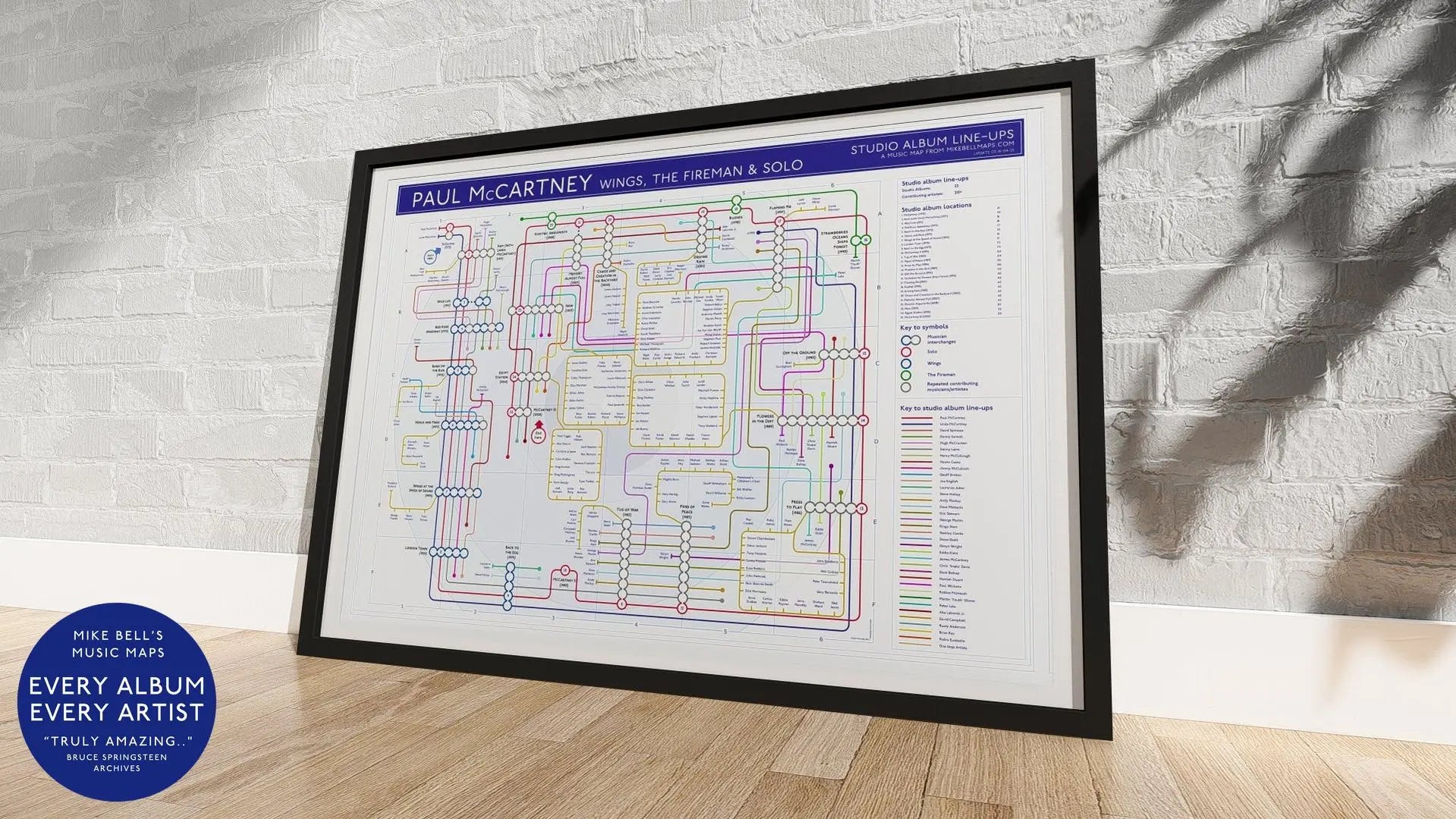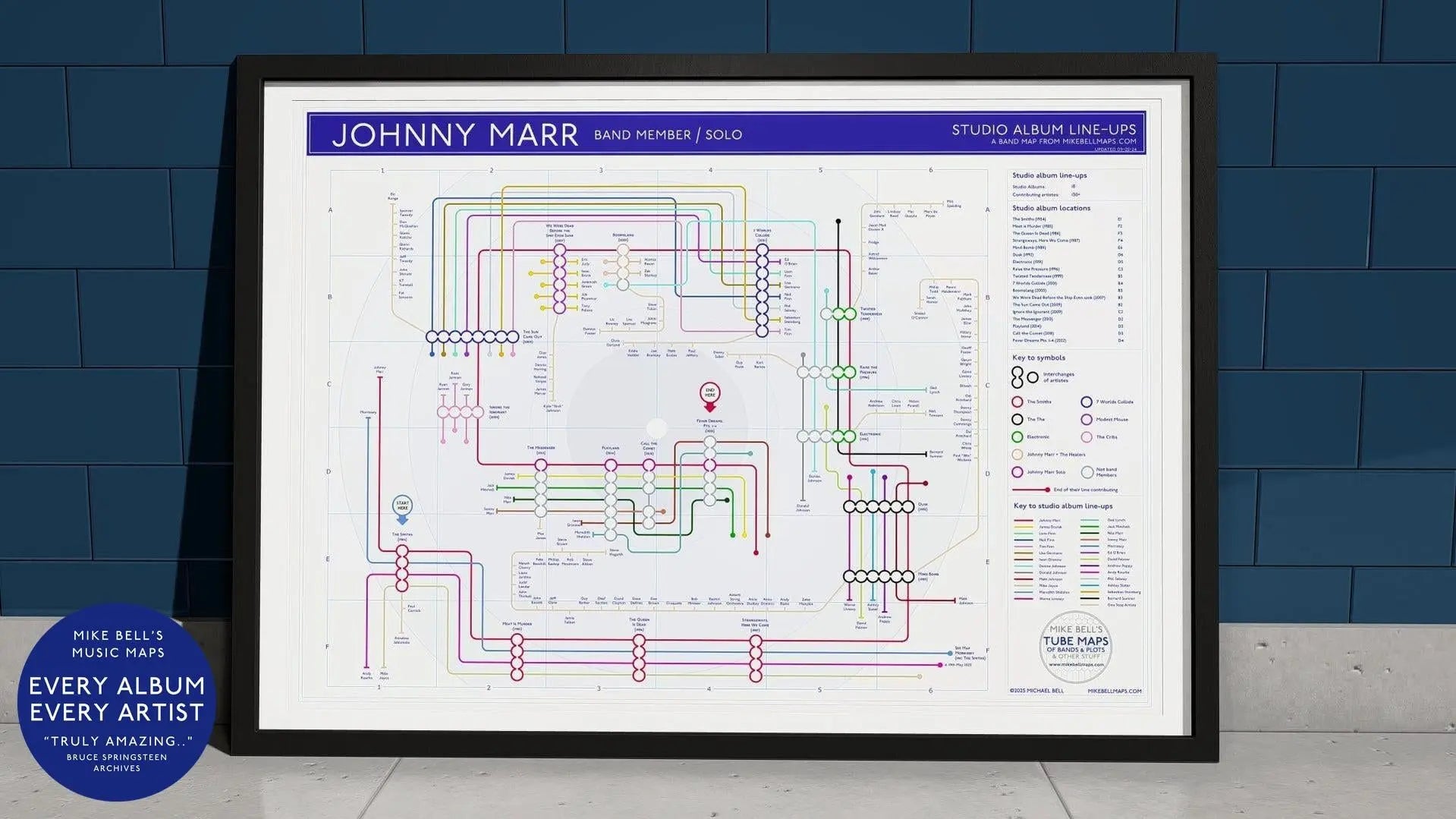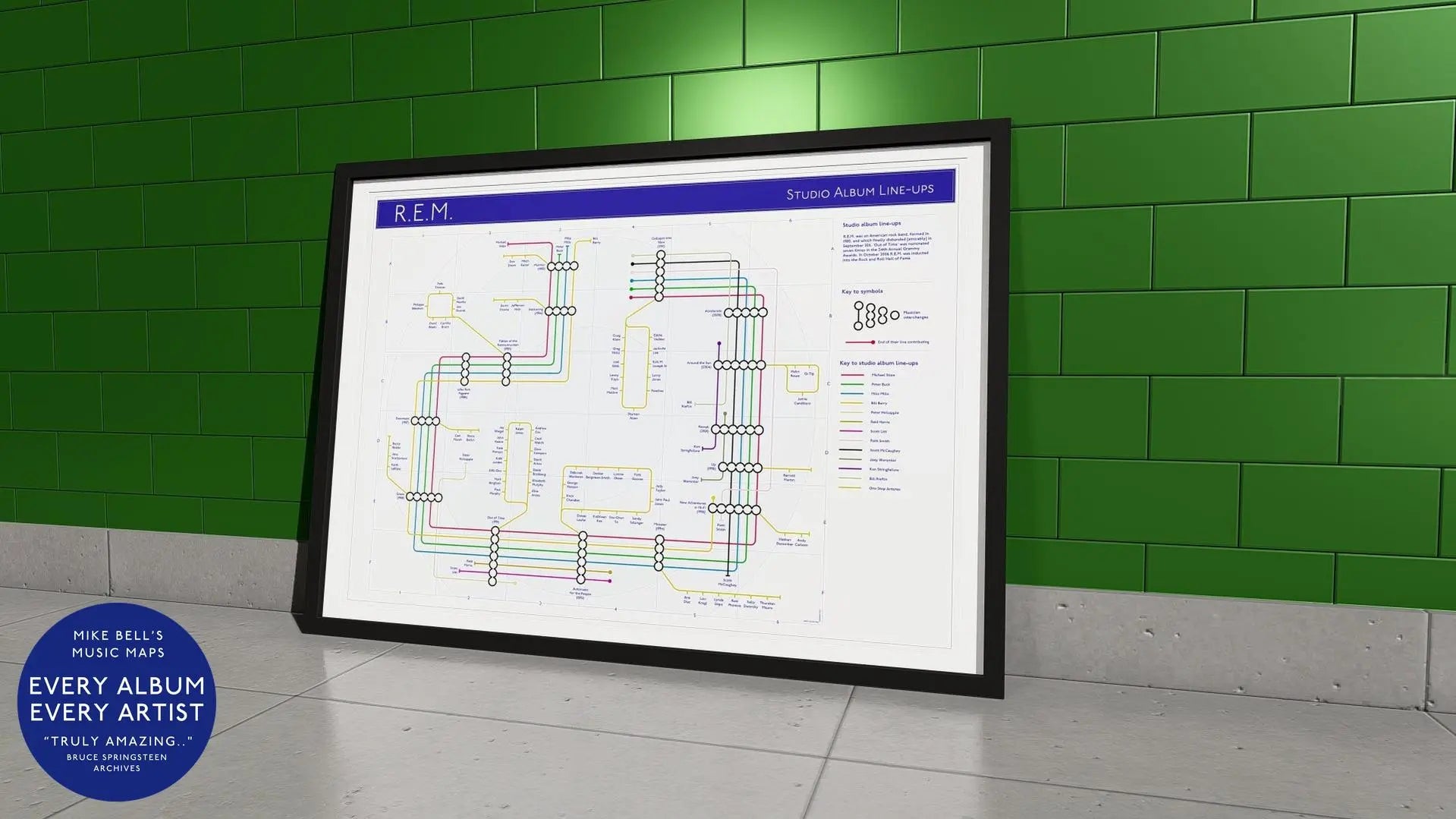
The Beatles – An Art Print of Every Album, Every Musician Art Print
by Mike Bell
·
The Beatles, on every album, with every musician across their thirteen studio albums, from Please Please Me (1963) to Let It Be (1970), formed their timeless collection of music.
Within this story lies a remarkable network of collaborators, producers, and instrumentalists who helped define their legacy - all to be found across my music map art print - available in white and black styles.

Through my meticulous research, I’ve plotted every musician credited across The Beatles’ core catalogue as a complex art print.
What emerges is a story of evolution, from four men in Abbey Road’s Studio Two to a global collective of session players, orchestras, and innovators who shaped the sound of modern music.
The Core Four: Lennon, McCartney, Harrison & Starr
At the heart of every Beatles album are four endlessly inventive musicians:
- John Lennon – vocals, rhythm and lead guitars, piano, Moog synthesiser, sound effects. From the jagged guitar on Revolution to the dreamy soundscapes of Across the Universe, Lennon’s fingerprints shaped every era.
- Paul McCartney – bass, piano, guitar, percussion, Moog. McCartney’s melodic instincts powered songs like Yesterday, Hey Jude, and The Long and Winding Road, while his multi-instrumental talent expanded with each album.
- George Harrison – lead guitars, sitar, Moog, harmonium, and lead vocals on Something, Here Comes the Sun, and While My Guitar Gently Weeps. Harrison’s spiritual and sonic explorations gave the band depth and mystery.
- Ringo Starr – drums, percussion, and occasional vocals (With a Little Help from My Friends, Octopus’s Garden). Ringo’s un-showy precision made him the rhythmic glue holding every experiment together.
The Fifth Beatle: George Martin
Producer George Martin was the architect of The Beatles’ sound. From his celesta on Baby It’s You to the avant-garde tape loops of Tomorrow Never Knows, Martin’s classical training and technical imagination turned raw ideas into studio magic. His string and brass arrangements on Eleanor Rigby and Let It Be remain among the most enduring in pop history.
Session Musicians & Hidden Contributors
The Beatles’ later albums reveal an ever-expanding cast of collaborators who brought texture and colour to their sound - all to be found on my intricately researched art print of the Beatles discography
- Eric Clapton – lead guitar on While My Guitar Gently Weeps
- Billy Preston – Hammond organ and electric piano on Get Back, Let It Be, and Something
- Alan Civil – French horn on For No One
- David Mason – piccolo trumpet on Penny Lane
- Sheila Bromberg – harp on She’s Leaving Home
- Natwar Soni & Buddhadev Kansara – tabla and tambura on Within You Without You
- Yoko Ono & Linda McCartney – backing vocals and sound effects on The White Album and Let It Be. These appearances chart how the band’s musical palette widened, from Merseybeat minimalism to orchestral psychedelia.
Every Album in Order – A Creative Evolution
1. Please Please Me (1963)
Recorded in a single day, this debut captured their live energy. George Martin’s simple piano parts and Lennon–McCartney harmonies defined early Beatlemania.
2. With The Beatles (1963)
Tighter, darker, and more confident, Martin’s production began to experiment with stereo and richer textures.
3. A Hard Day’s Night (1964)
The first album of all Lennon–McCartney originals. Lennon’s Rickenbacker jangle and Martin’s piano doubled on “A Hard Day’s Night” became signature sounds.
4. Beatles for Sale (1964)
A weary but mature record, folk influences foreshadow Rubber Soul.
5. Help! (1965)
Orchestration expands. The inclusion of flutes and strings hinted at the studio revolution to come.
6. Rubber Soul (1965)
The sitar arrives via Harrison’s Norwegian Wood. A new studio sophistication emerges, with harmonium, fuzz bass, and a mix of East and West.
7. Revolver (1966)
Studio innovation peaks: backwards guitars, tape loops, brass sections, and tabla on Love You To. Eleanor Rigby’s string octet shows McCartney and Martin in symphonic sync.
8. Sgt. Pepper’s Lonely Hearts Club Band (1967)
A kaleidoscope of collaborators, from orchestras to the avant-garde. Session players like Sounds Inc. and harpist Sheila Bromberg helped turn pop into art.
9. Magical Mystery Tour (1967)
Studio experiments spill into surrealism. The brass ensemble on I Am the Walrus embodies controlled chaos.
10. The Beatles (The White Album) (1968)
A double album of extremes: stripped-back blues next to orchestral opulence. Guest players include Eric Clapton and Yoko Ono, with strings on Martha My Dear arranged by George Martin.
11. Yellow Submarine (1969)
Half-film soundtrack, half-studio experiment, highlighting Martin’s orchestral compositions and The Beatles’ whimsy.
12. Abbey Road (1969)
The band’s technical peak. Billy Preston’s Hammond organ and Harrison’s Moog synthesiser shape the medley’s futuristic textures.
13. Let It Be (1970)
A raw, soulful farewell. McCartney’s piano anthems meet Preston’s gospel touch. Linda McCartney’s harmonies soften the melancholy of the title track.
Legacy of Collaboration
What this detailed mapping of credits makes clear is that The Beatles were never isolated geniuses. Their brilliance grew through collaboration between four songwriters, a visionary producer, and a revolving cast of specialists. Every violinist, trumpeter, tabla player, and engineer left a fingerprint on music history. This web of connections, hundreds of musicians across seven years, forms the DNA of my visual artwork, The Beatles Studio Discography Map, where each album becomes a station in a vast creative network.
Explore the Complete Beatles Map
You can explore this research visually in my artwork: The Beatles Albums Music Map. Every line, every connection, every name is drawn from years of first-hand data study, turning the band’s entire career into a living map of collaboration.
Related Music Maps
Q&A: The Beatles Musicians and Collaborators
Who produced every Beatles studio album?
All core albums were produced by George Martin, whose arrangements and technical creativity earned him the title “the Fifth Beatle.”
Who played trumpet on “Penny Lane”?
David Mason of the London Symphony Orchestra performed the famous piccolo trumpet solo.
Which Beatles song features Eric Clapton?
Clapton played the searing lead guitar on George Harrison’s While My Guitar Gently Weeps from The White Album.
Who added the harp to “She’s Leaving Home”?
That delicate harp part was performed by Sheila Bromberg, arranged by Mike Leander under George Martin’s direction.
Which Beatles tracks feature Indian instruments?
Songs such as Within You Without You and Love You To feature tabla by Natwar Soni and tambura by Buddhadev Kansara and Amrit Gajjar, reflecting Harrison’s immersion in Indian classical music.
Who played organ and electric piano on “Let It Be”?
The soulful Hammond organ and electric piano were played by Billy Preston, whose gospel energy revitalised the sessions.
Did Yoko Ono or Linda McCartney perform on Beatles albums?
Yes. Yoko Ono contributed avant-garde vocals and sound effects to The White Album, while Linda McCartney sang harmonies on Let It Be.
Who arranged the strings on “Eleanor Rigby” and “Let It Be”?
String arrangements were composed by George Martin, with later additions on Let It Be by Richard Hewson and John Barham.
Which Beatles album features the Moog synthesiser?
The Abbey Road sessions (1969) prominently feature the Moog, played by George Harrison and Paul McCartney on tracks like Here Comes the Sun and Maxwell’s Silver Hammer.
Closing Thoughts
The Beatles’ narrative is not merely four countenances on an album cover; it is a complex fabric of musical collaboration that transformed popular culture. From Abbey Road’s string performers to Billy Preston’s gospel influence, each contribution comprised a segment of a creative network now enshrined in my Beatles Albums Music Map.












